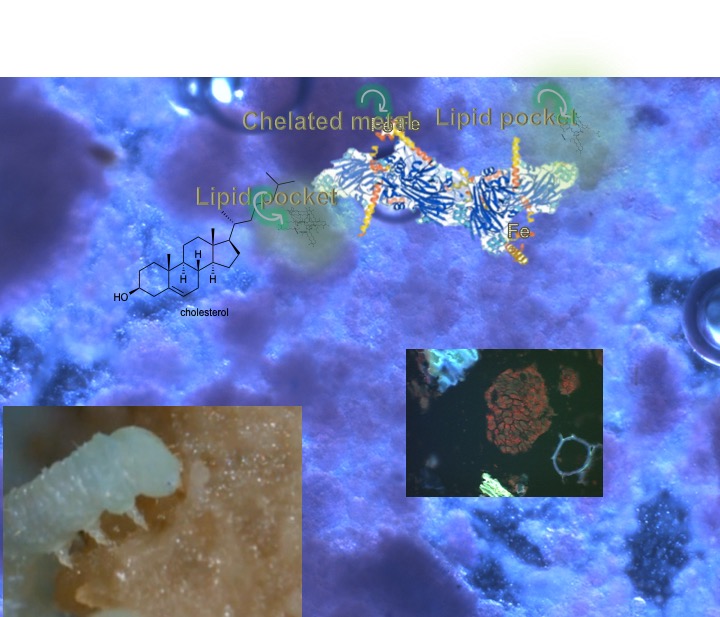At the centre of insect rearing systems are diets, usually artificial diets. These diets are composed of multiple components such as base nutrients and functional components. Base nutrients are usually complex nutrient “packages” such as wheat germ, soy flour, chicken eggs, corn meal, meat products, yeast products, rice flour, wheat bran, oat bran, and dozens of other foods that contain proteins, carbohydrates, lipids, minerals, vitamins, and various biochemical components such as flavonoids, phenolics, etc. Many of the base nutrients common to insect diets are nearly complete nutrient packages that are supplemented by other components to complete the nutritional and phagostimulatory (feeding stimulation) of the artificial diet. If a component such as wheat germ is found to have a deficiency in carbohydrate or lipid, for example, sucrose or starch and linseed oil or cholesterol may be added to complete the nutritional or phagostimulatory needs of the insects. Salt (mineral) and vitamin mixtures are also often added to complete the nutritional package.
Other artificial diet components that help give the diet consistency and stability are added to meet our target insect’s specific feeding characteristics. For example, many insects that feed on plant tissues do well with gelled diets, so we use gelling agents such as agar, carrageenan, or other substances that bind water and diet components in such a way that the consistency of plant leaves, stems, roots, or fruits is mimicked enough that the insect accepts the diet as a suitable plant-part substitute. We also add materials that reduce microbial spoilage or oxidative deterioration (anti-microbial agents and antioxidants) to stabilize the diet. While the topic of nutritional and functional components of diets deserves much more attention, for the present discussion, let us say that the diets that are designed to provide complete nutrition, palatability, bioavailability, and stability are the diets that we deem “successful” (See Cohen 2004 and 2015 for further discussion of the nature of successful diets).
However, one of the facts of life that became apparent to me decades ago is that many diets that people had tried to develop failed to support complete development of successive generations of target insects. Even though ALL the seemingly necessary components were present, often, our diets failed!
I came to realize that “the whole is greater than the sum of its parts,” in diet development research. I found that I could take a good diet as as living or frozen prey of a predator, break down the components, and then reassemble them and I would NOT have a diet that worked as well as the original food. I found further that it was not just a question of the food being alive that related to the food’s success. It was something in the organization of the food’s components that conferred (in part anyway) success of the diet. The organization is another way of discussing the matrix nature of the diet and its constituent components. I offer an image of a diet that shows how components function at various levels of organization (gross macro-, macro-, micro-, and nano-levels of organization.)
I will further discuss this diagram and its MATRIX nature in further discussions on these pages. I also point out that in my classes, I try to provide an intense and. detailed documentation and process of inquiry into the matrix nature of diets that work=successful diets.

